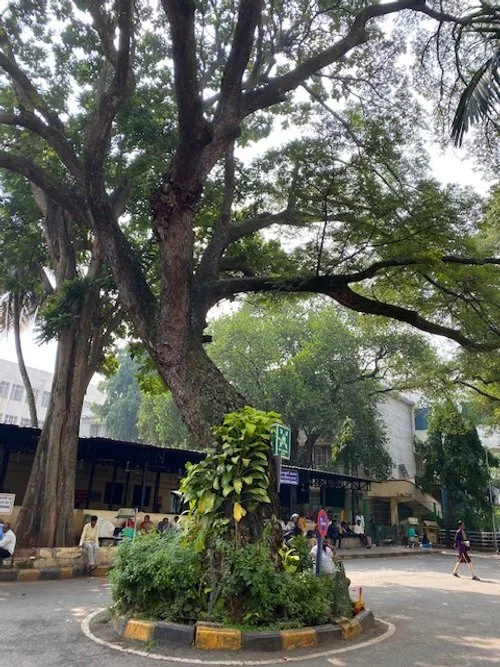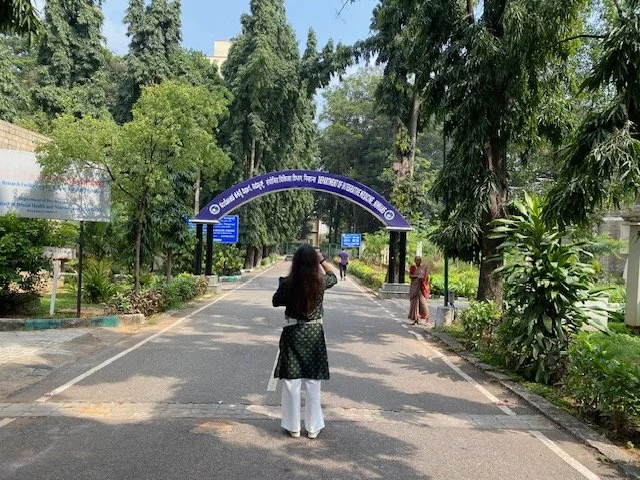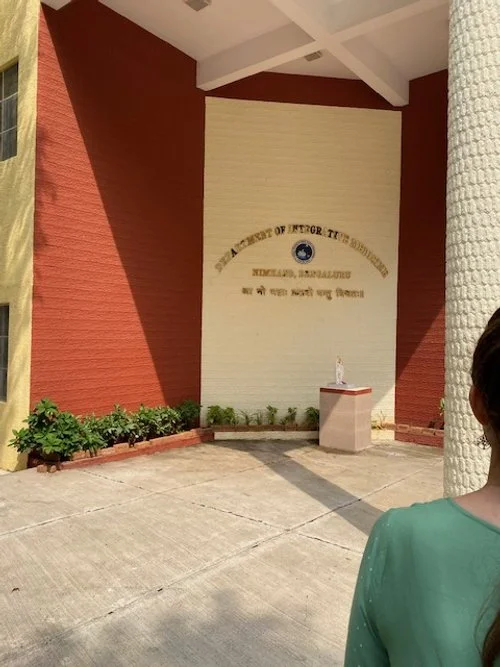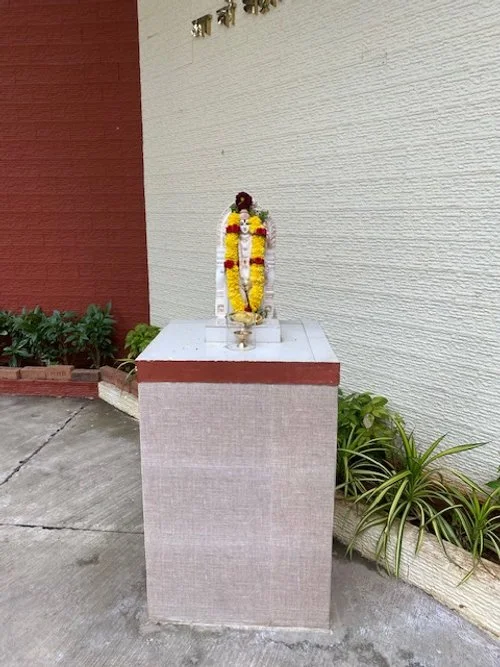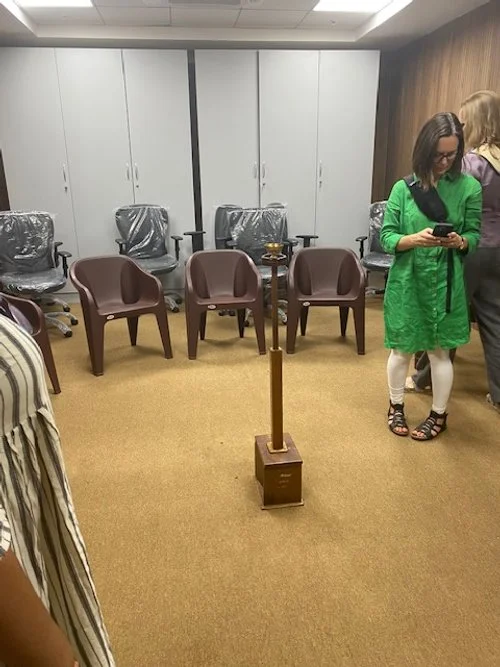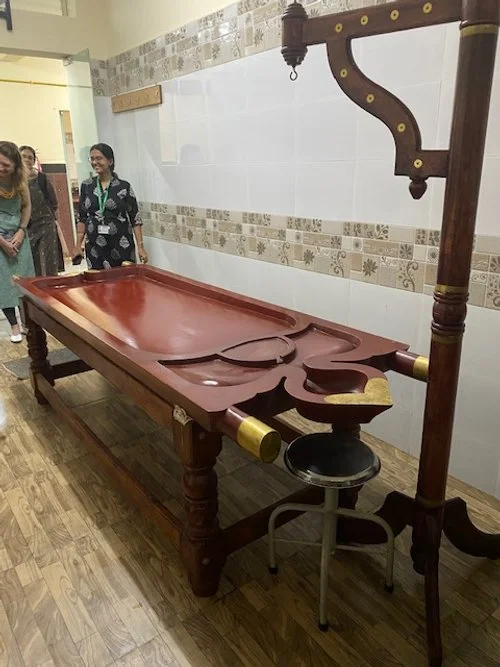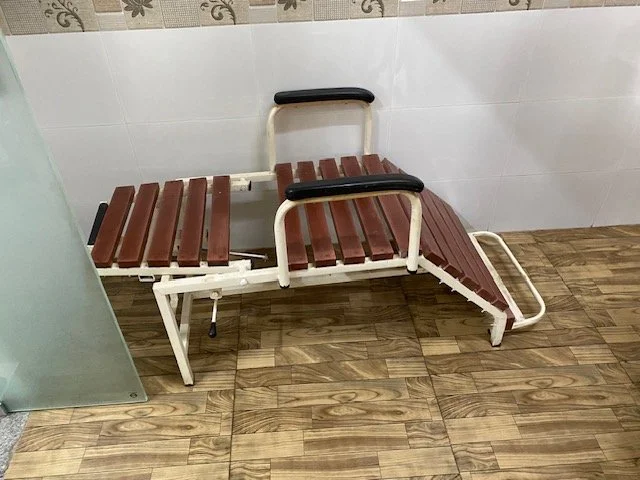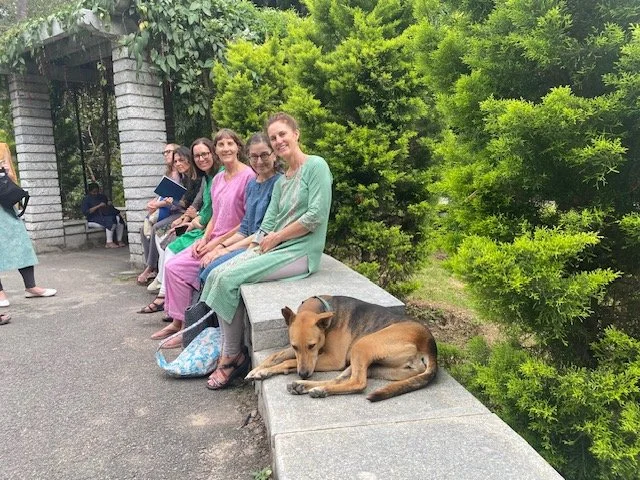Mona's India Journey - 2023 part 4 - NIMHANS
One of the extra-curricular highlights of the trip was our day at NIMHANS. NIMHANS is the National Institute of Mental Health and Neuro-Sciences, and they are at the forefront of integrative mental health research, academics (MD, PhD, and fellowships), and clinical services.
NIMHANS has a HUGE campus. It takes up five (5) full city blocks in Bangalore. It reminds me a lot of Queens University back home where it is integrated into the city, and blends the hospital buildings, with other buildings (offices, security, research) as well as natural elements (gardens, trees, etc.).
A huge tree in the middle of road… you can see all the people waiting to get in for their various appointments.
The archway sign for the Department of Integrative Medicine. And me taking a picture of Ágnes taking a picture (cause there’s something fun about that).
This is the courtyard for the Department of Integrative Medicine and you can see the Murthi of Dhanvantari.
Everyday they do a puja (offerings) to Dhanvantari to honour the teachings of Āyurveda.
India’s Ministry of AYUSH is focused on education and research in traditional forms of medicine such as Āyurveda, Yoga, Unani, Siddha, Homeopathy, as well as other forms of medicine like Naturopathy.
We were there for the day, and so we only tipped the iceberg of what is happening at NIMHANS, and yet what we saw and heard was both inspiring and encouraging.
According to NIMHANS’s director, Dr. Pratima Murthy,
“NIMHANS is world-renowned as a center for mental health, neurosciences and allied fields. The vision of NIMHANS is to be a world leader in these areas and to evolve state-of-the-art approaches to patient care through translational research. The contributions of NIMHANS in providing the highest quality of clinical services, standards of excellence in training and active engagement in research in these specialized fields are widely known. NIMHANS has been committed to training in basic sciences related to the brain and mind, behaviour in health and ill-health, translation of evidence from the bench to the bedside, as well as in the community. The concurrent emphasis on both biomedicine as well as psychosocial aspects has driven research ranging from neuroplasticity, imaging and genomics to the psychological, spiritual and anthropological aspects of mental well-being and illness.”
They are working to be truly integrative in nature. As part of our discussions with the team, we learned that they are doing work on many things, including projects on multiple sclerosis (MS), depression, schizophrenia, and Alzheimer’s. The intention is to provide the best care possible for the patient, using all available tools, including imaging (PET, MRI, etc.), blood work, gut microbiome profiles, cognitive testing, etc. They also shared with us about the different income tiers, and how half of their patients (the ones who are living in poverty) do not have to pay for the services and treatments. NIMHANS has government funding to support this. Their hospitals have 1000 beds and about 5000 employees.
They shared an example with us. When a patient comes in for a mental health assessment, they meet with a yoga therapist, āyurvedic practitioner/doctor, and a psychiatrist - everyone all together in the same room at the same time. Together they decide the appropriate starting point, based on where the patient is at, and how to proceed with helping the person manage their condition. If a condition is mild, often they begin with yoga to build resilience, confidence, and self-awareness. If the condition is more complex or chronic, Āyurvedic practices and medicines are added to the yoga. And if the condition is psychiatric, then pharmaceuticals are used with the Yogic and Āyurvedic practices.
Here is a tour of their Yoga Centre. Yoga has its own entire building.
They offer group classes (often with specialties like “yoga for depression” or “yoga for anxiety”), one-on-one sessions, as well as breathwork, meditation, and more.
This is their team of yoga teachers and yoga therapists (many of them with PhD education in Yoga. They shared that the yoga tradition they base their teaching on is Patañjali Yoga. From there, all styles are welcome as long as they suit the patients. They do one-on-ones and specialized group classes. The Yoga involves all components of Patañjali Yoga - ethics (yamas & niyamas), postures (āsana), breathwork (prānāyāma), sensory management (pratyahāra), and meditation (dhārana, dhyāna, and samādhi).
Strap wall for supported work.
They have bars for those who benefit from support while doing the standing poses.
They built separate rooms for meditation that have less sensory stimulus (quieter area, no windows).
Trataka is a meditation technique that involves steady gazing. Here you can see the stand for the lamp they use for flame-gazing meditation. Everyone sits in a chair, and they have made it such that the flame will be at about eye height so there is less strain on the neck.
And they had this really beautiful yoga poster, so I took a video for us :)
We also got to tour their pañcakarma (Āyurvedic bio-purification) floor in the main building (different building from the Yoga Centre).
This is the basic setup. On the LHS you can see the droni (specialized wooden table), the śīro stand (where they put the pot for pouring fluids (like milk, water, oil, etc.) over the forehead), and the countertop with the sink and hot plates for preparing and assembling the medicines. On the RHS you can see the steam box for svedana (sweat therapy).
This is the inside of the steam box.
This angle shows additional details on the droni and śīro setup.
This is a vamana table, for emesis therapy. They put a bucket underneath to collect to vomit so they can measure the amount and see what’s coming out to make sure all is as expected.
And this is a nasya chair, which I had never seen before. Nasya is the technique of administering medicines via the nasal passages. It’s similar to a reclining patio chair to the head+neck+spine are supported while reclined for the administration of the medicine.
In a different PK theatre they had a different kind of steam box.
Here it is with the lid open, and you can see the pressure cookers on the RHS that provide the steam. This is a better option for someone who needs to be reclined for their svedana (sweat therapy).
In another building…
Check out the puppy sleeping on the welcome mat :)
Going from place to place on the campus.
Āyurvedic herb garden where they grow the herbs so they can pick them fresh to make the medicines.
I hope this gives a sense of some of the amazing work that is being done at NIMHANS - truly inspirational. There is so much more, and yet, this is what I can put down at this time. Know that NIMHANS offers all sorts of opportunities for education, research, and so forth. If you want to explore them more, you can find their website here.
I’ll end with my favourite NIMHANS picture - happy Āyurveda peeps with a sleeping puppy dog :)
Thanks for reading! Next week I get back on a plane to fly home…

